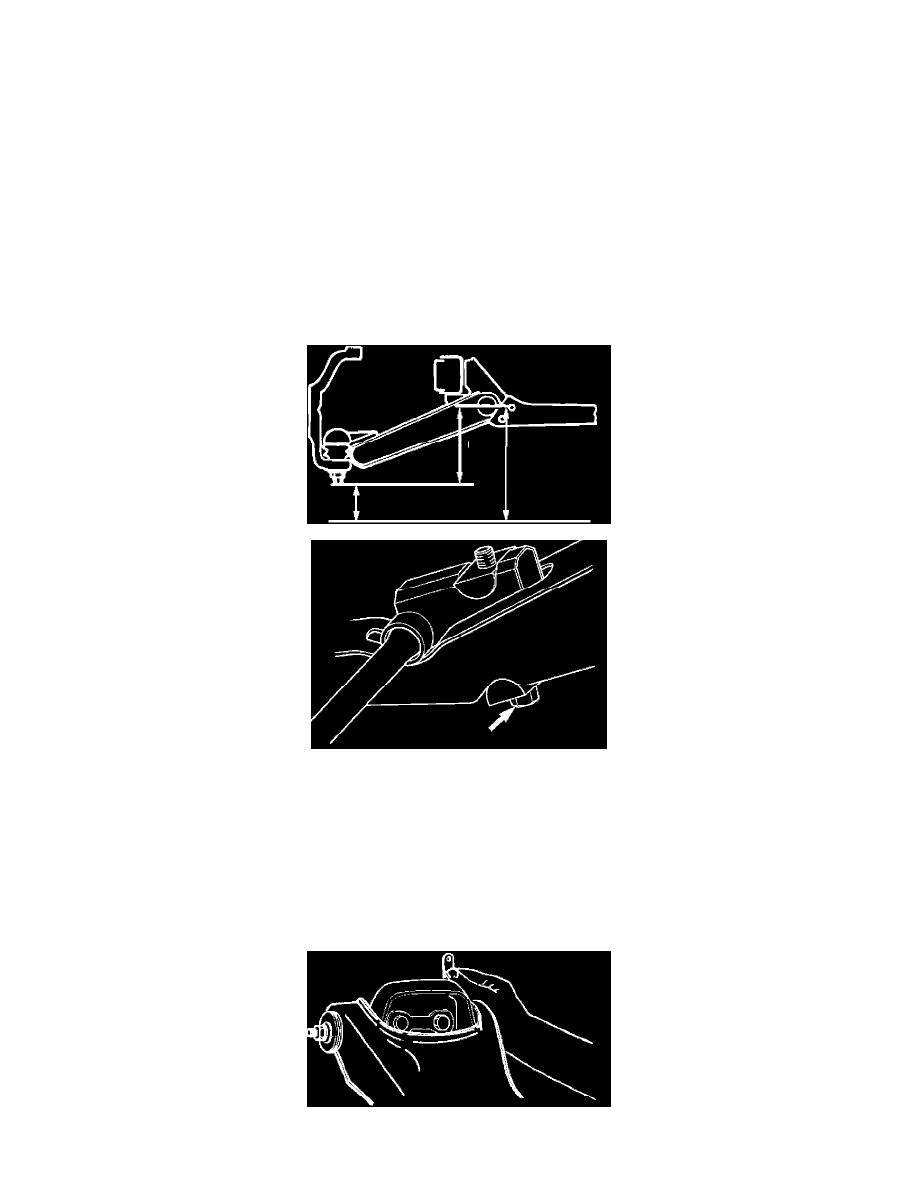Rodeo 2WD V6-3.2L (2003)

Alignment: Testing and Inspection
Inspection
Before making any adjustments affecting caster, camber or toe-in, the following front end inspection should be made.
1. Inspect the tires for proper inflation pressure.
2. Make sure that the vehicle is unladen condition (With no passenger or loading).
3. Make sure that the spare tire is installed at the normal position.
4. Inspect the front wheel bearings for proper adjustment.
5. Inspect the ball joints and tie rod ends. If excessive looseness is noted, correct before adjusting.
6. Inspect the wheel and tires for run-out.
7. Inspect the trim height. If not within specifications, the correction must be made before adjusting caster.
8. Inspect the steering unit for looseness at the frame.
9. Inspect shock absorbers for leaks or any noticeable noise.
10. Inspect the control arms or stabilizer bar attachment for looseness.
11. Inspect the front end alignment using alignment equipment. Follow the manufacturer's instructions.
12. Park the vehicle on a level surface.
Trim Height Adjustment
Adjust the trim height (1) by means of the adjusting bolt on the height control arms.
Caution: When adjusting front end alignment, be sure to begin with trim height first, as it may change other adjusted alignments.
1. Check and adjust the tire inflation pressures.
2. Park the vehicle on a level ground and move the front of the vehicle up and down several times to settle the suspension.
3. Make necessary adjustment with the adjusting bolt on the height control arms.
Trim height: 119 ± 5 mm (4.69 ± 0.2 inch)
Caster Adjustment
